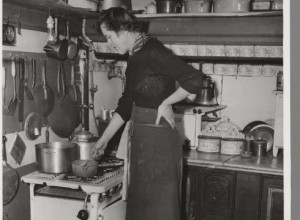Julia Child, Carnegie Hall and the Alexander Technique
In preparation for a recent road trip I picked up the Audio CD of Julia Child’s book “My Life in France”. Since the art of French cooking has always seemed daunting to me, I never even opened one of Julia’s cookbooks in a store or a friend’s kitchen. All I knew was that she discovered food late in life and that she brought French cooking to America. What I learned in my audio book about this woman astounded me. She repeated and practiced recipes over and over again, when she went to cooking school, and later, when she adapted French recipes for the American market. She wanted to understand every single step of transformation from an animal to a meal, from basic ingredients to a sauce or baguette, she looked into the science of flour types and the performance of ovens, but most of all she repeated and reworked, and then she did it once again – just to be sure. After she had already been a highly accomplished home cook and started to teach (a friend!), she cooked the dish in the morning, in order to be prepared for her lesson in the afternoon. She checked and re-checked all the recipes that went into her first cookbook “Mastering the Art of French Cooking”, which took about a decade of preparation.
Alexander Technique teachers go through a 3-year 1600 hour fulltime training in order to become certified by the American Society of Alexander Technique teachers, AmSAT, they continue to practice and take lessons from colleagues – more or less for the rest of their lives, and they lie down regularly to practice elements, which were introduced in their first lessons: neck to be free, head forward and up, back to lengthen and widen, knees away, etc. It is this practice of conscious control, this mastering of basic ingredients that enables students to improve their artistic or athletic performances, to find a resolution to persistent pain, to manage a psychological or emotional crisis.
F.M. Alexander did not accept anyone as a student unless the person had committed to a minimum of 30 lessons, daily, five times a week. He knew how to be successful. So did Julia Child, as well as many other accomplished teachers. My young daughter’s first violin teacher quoted Shinichi Suzuki when she told us “you don’t need to practice every day, only on days you eat” – in the Suzuki teaching method, figures in the range of 10,000 repetitions are being mentioned to accomplish a set goal.
By taking Alexander Technique lessons, students’ sense of themselves gradually deepens through refined kinesthetic experiences and through expanding cognitive skills.
Thus the AT is a skill set to address your physiological system as well as change your psychological reactions. For the rest of your life you can practice Lying Down in Semi-Supine.
Do you remember this old joke? A man clenching a violin case under his arm, seemingly in a rush on Manhattan’s 5th Avenue, asks a passerby “How do I get to Carnegie Hall?” The reply: “Practice, my friend, practice!



Comments
Julia Child, Carnegie Hall and the Alexander Technique — No Comments
HTML tags allowed in your comment: <a href="" title=""> <abbr title=""> <acronym title=""> <b> <blockquote cite=""> <cite> <code> <del datetime=""> <em> <i> <q cite=""> <s> <strike> <strong>